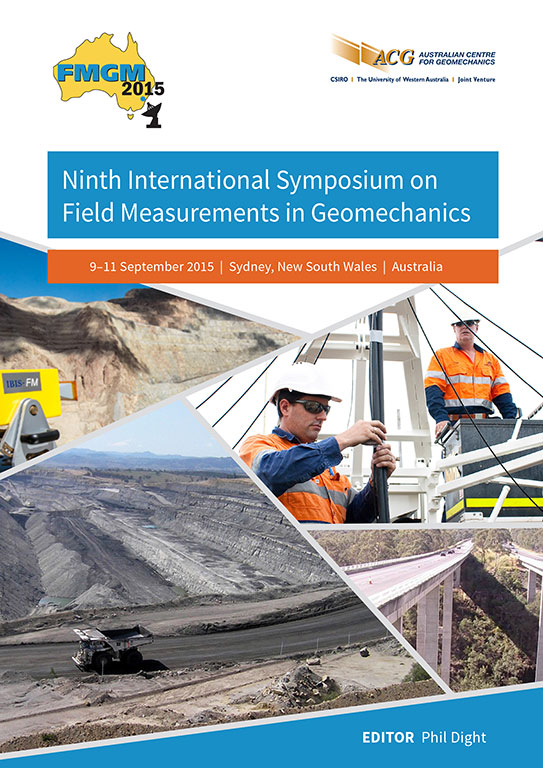Application of distributed temperature sensors in piping-prone dikes

|
Authors: Bersan, S; Koelewijn, AR; Simonini, P |
DOI https://doi.org/10.36487/ACG_rep/1508_32_Bersan
Cite As:
Bersan, S, Koelewijn, AR & Simonini, P 2015, 'Application of distributed temperature sensors in piping-prone dikes', in PM Dight (ed.), FMGM 2015: Proceedings of the Ninth Symposium on Field Measurements in Geomechanics, Australian Centre for Geomechanics, Perth, pp. 475-486, https://doi.org/10.36487/ACG_rep/1508_32_Bersan
Abstract:
In the past two decades, Distributed Temperature Sensing (DTS) systems have been installed in a number of dams with the aim of detecting internal erosion. The functioning principle is based on the fact that the temperature distribution inside an embankment dam changes when a leakage occurs. In addition to the benefits given by the use of optical fibres in lieu of electrical sensors, a major advantage of this technique lies in its high spatial resolution (up to two measurements per metre) achievable over long distances with a single sensor. DTS looks also promising for the monitoring of dikes prone to piping. With this term, we address the mechanism that occurs under hydraulic structures lying on a permeable and erodible foundation soil. The temperature variations measured so far by DTSs at the initial stage of piping are of little extent, thus the detection of piping when there is still time for intervention before the dike collapses is not straightforward. The effectiveness of a fibre-optic DTS system to detect piping has been tested in a largescale failure test run in the Netherlands in 2012 on a dike built on purpose for the experiment. This paper describes the set-up of the experiment and presents the temperature data obtained. A thorough analysis of the data gives insights on the process of heat transfer under a dike as well as on the development and evolution of thermal anomalies around leakages. It emerged that the onset of thermal anomalies around piping channels, and so their magnitude, depends on a number of site specific factors, among which the duration of the flood event. The minimum acceptable specifications of a DTS system for real-time piping detection are also discussed.
References:
Beck, YL, Khan, AA, Cunat, P, Guidoux, G, Artieres, O, Mars, J & Fry, JJ 2010, ‘Thermal monitoring of embankment dams by fiber optics’, Proceedings of the 8th ICOLD European Club Symposium on Dam Safety, International Commission on Large Dams, Paris, France, pp. 444-447.
Cirio, CG, Bossuto, P & Viale, F 2004, ‘Quadro conoscitivo sulle rotte nell’arginatura maestra del Po documentate a partire dal 1800 lungo il percorso fluviale da Zerbo (PV) a Serravalle (FE)’, CNR-IRPI Sezione di Torino.
Dornstädter, J 2013, ‘Leakage detection in dams – state of the art’, 20th SLOCOLD, Ljubljana.
Fry, J-J 1997, ‘Internal erosion and surveillance’, ICOLD 19th Congress, Florence, vol. V, pp. 255-268.
Henault, JM, Moreau, G, Blairon, S, Salin, J, Courivaud, JR, Taillade, F, Merliot, E, Dubois, JP, Bertrand, J, Buschaert, S, Mayer, S & Depine-Lesoille, S 2010, ‘Truly distributed optical fiber sensors for structural health monitoring: from the telecommunication optical fiber drawling tower to water leakage detection in dikes and concrete structure strain monitoring’, Advances in Civil Engineering, vol. 2010, 13 p.
ICOLD 2015, International Commission on Large Dams, ‘Internal erosion of existing dams, levees and dikes, and their foundations – Volume 1: Internal erosion processes and engineering assessment’, Bulletin of ICOLD, no. 164.
Johansson, S & Sjödahl, P 2004, ‘Downstream seepage detection using temperature measurements and visual inspection monitoring experiences from Røsvatn field test dam and large embankment dams in Sweden’, Proceedings of the International Seminar on Stability and Breaching of Embankment Dams, EBL, Oslo, 20 p.
Johansson, S & Sjödahl, P 2009, ‘A guide for seepage monitoring of embankment dams using temperature measurements’, Canadian Electricity Association, report no. T062700.
Kamp, van der, G & Bachu, S 1989, ‘Use of dimensional analysis in the study of thermal effects of various hydrogeological regimes’, Hydrogeological regimes and their subsurface thermal effects, vol. 47, pp. 23-28.
Koelewijn, AR, de Vries, G & van Lottum, H 2013, ‘Full-scale field validation of innovative dike monitoring systems’, Proceedings of the 18th International Conference on Soil Mechanics and Geotechnical Engineering, Paris.
Koelewijn, AR, de Vries, G, van Lottum, H, Förster, U, van Beek, VM & Bezuijen, A 2014, ‘Full-scale testing of piping prevention measures: three tests at the IJkdijk’, Proceedings of the 8th International Conference on Physical modelling in Geotechnics, Centre for Offshore Foundation Systems, Perth, pp. 891-897.
Sheffer, MR, Johansson, S & Sjödahl, P 2009, ‘Recent developments in the use of temperature, resistivity and self-potential methods for monitoring embankment dam performance’, Proceedings of the Canadian Dam Association Annual Conference, Canadian Dam Association, Toronto.
Vries, de, G, Brake, ter, CKE, Bruijn, de, H, Koelewijn, AR, Langius, EAF, Lottum, van, H & Zomer, WS 2013, ‘Dike monitoring: evaluation of measurement techniques and visualization systems, Final report All-In-One Sensor Validation Test’, STOWA/Stichting IJkdijk, Amersfoort, The Netherlands [in Dutch].
Vrijling, JK 2010, Piping - Realiteit of Rekenfout?, Rijkswaterstaat, Waterdienst [in Dutch].
Weijers, JBA & Sellmeijer, JB 1993, ‘A new model to deal with the piping mechanism on filters’, in J Brauns, M Heibaum & U Schuler (eds), Filters in geotechnical and hydraulic engineering, Balkema, Rotterdam, pp. 349-355.
© Copyright 2025, Australian Centre for Geomechanics (ACG), The University of Western Australia. All rights reserved.
View copyright/legal information
Please direct any queries or error reports to repository-acg@uwa.edu.au
View copyright/legal information
Please direct any queries or error reports to repository-acg@uwa.edu.au